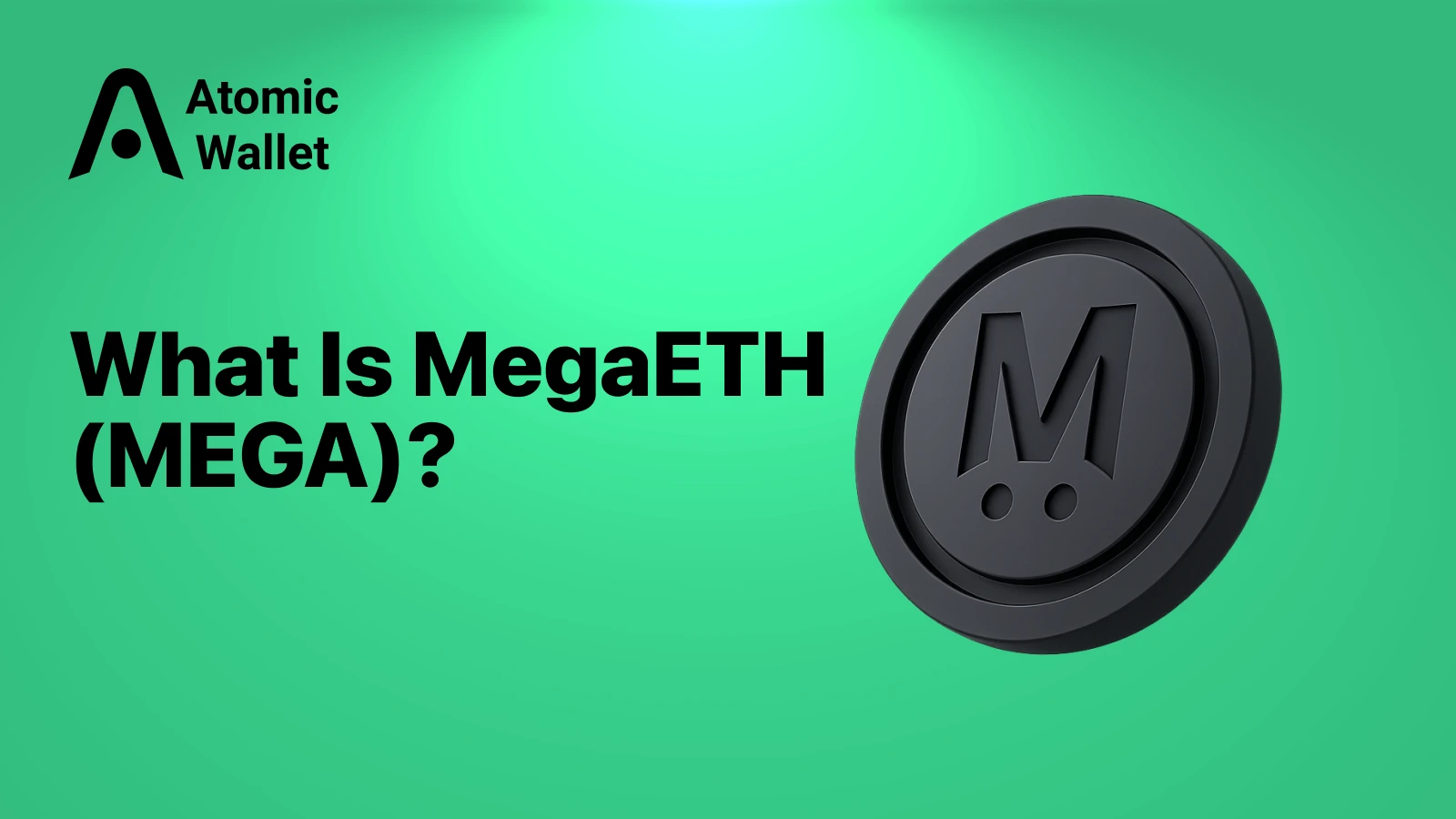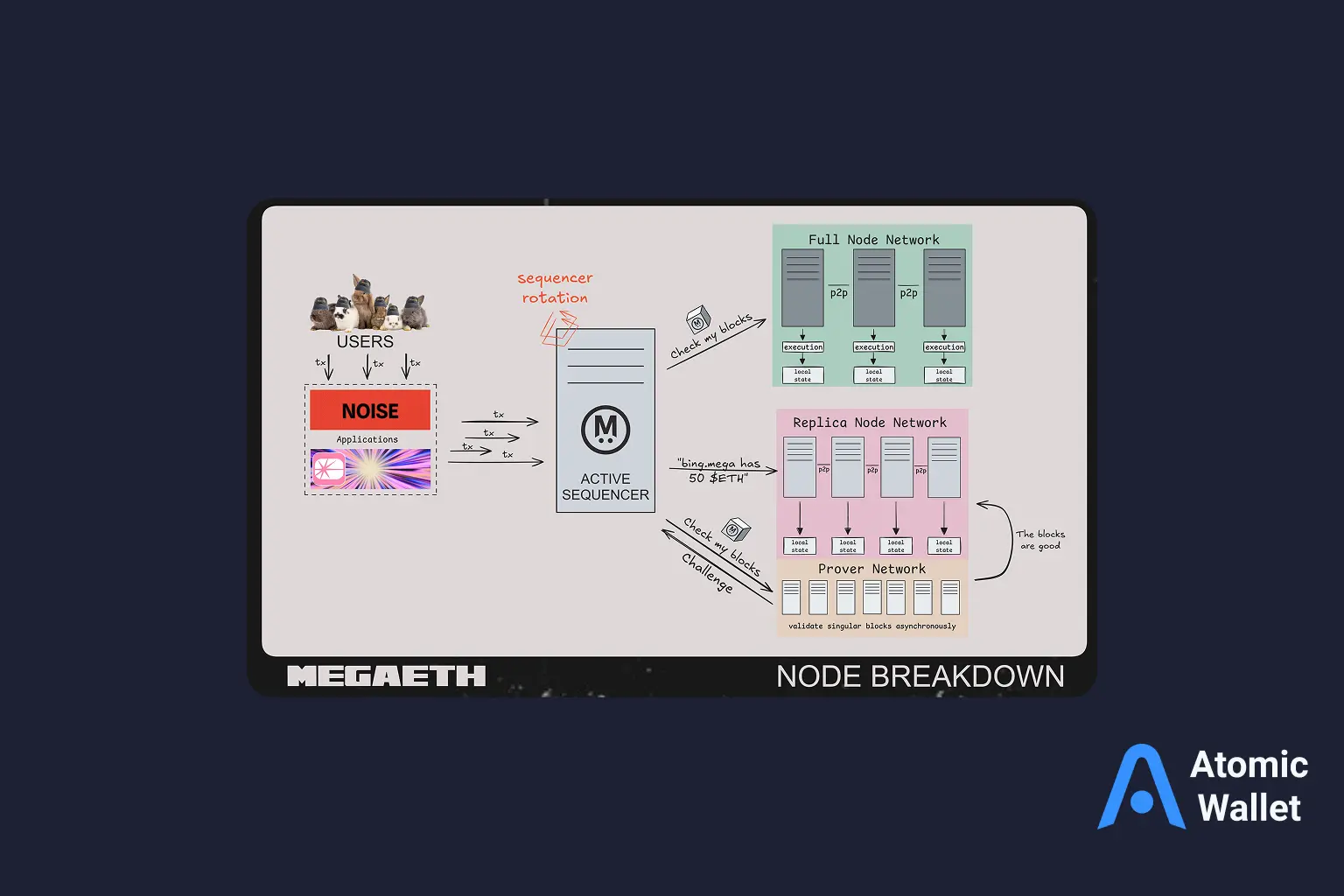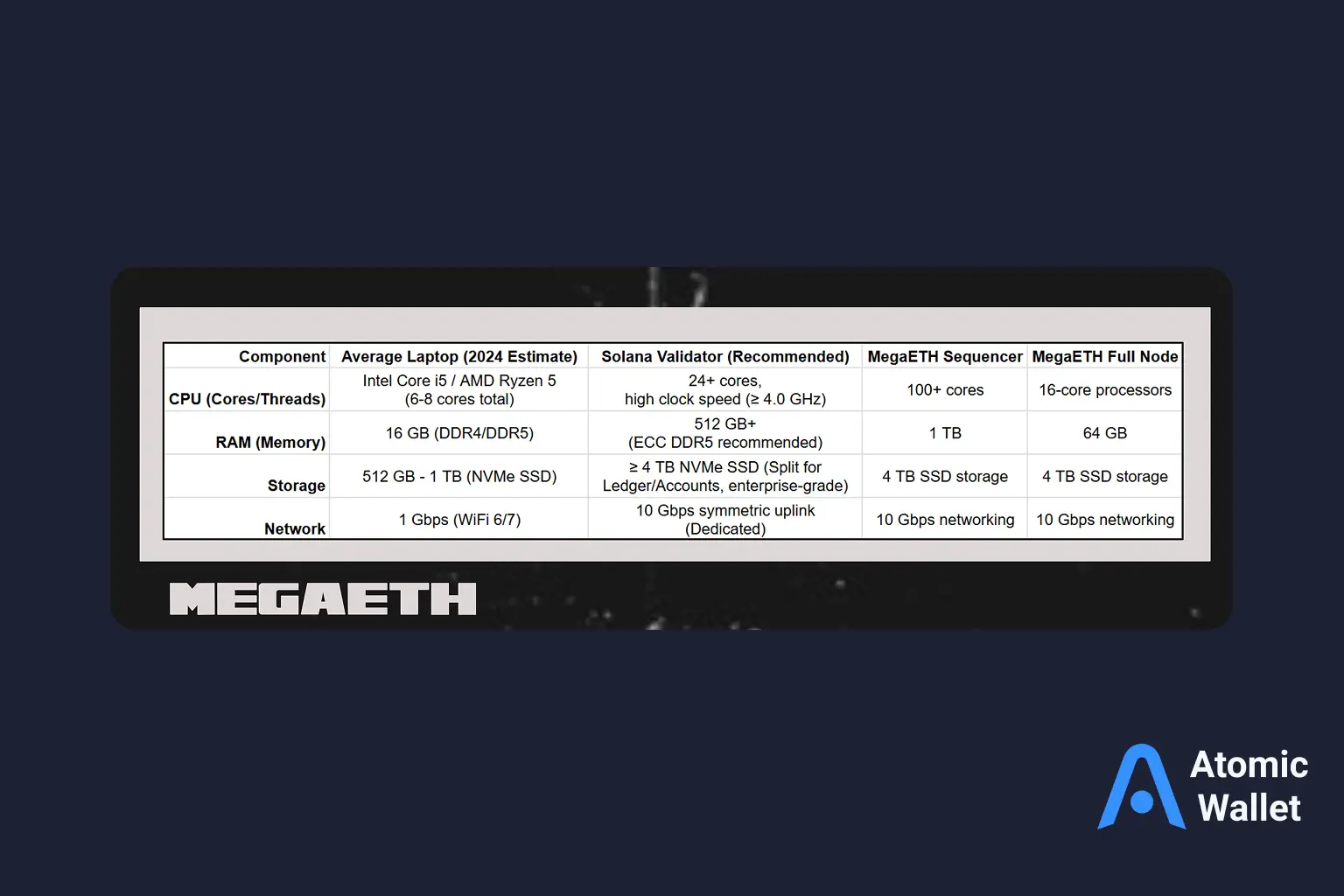Assets

Exchange

Buy Crypto




Ethereum has become the backbone of Web3 — powering everything from DeFi to NFTs.
But speed remains one problem to crack: currently, even with commonly-used Layer-2 substitutes like Arbitrum or Optimism, transactions take between 5 to 30 seconds to get confirmed. In times of network congestion, that time can stretch into minutes or hours.
MegaETH is hoping to flip that script. This new Layer-2 guarantees real-time transactions — in less than one second, regardless of network load. Whether a DeFi trade or a meme coin mania, MegaETH assures that every transaction must be instant.
Its key is parallel node architecture that splits work across multiple types of nodes — from ordering to execution to authentication of transactions. The outcome: Web2-level performance with Ethereum-grade security.

MegaETH is a real-time Layer-2 blockchain that seeks to make Ethereum instant.
While the traditional L2s like Arbitrum or Optimism are all about scalability through batching, MegaETH also does parallel execution and async processing, so that transactions settle in under one second — even in high load.
The network is constructed in C++ and Rust, for low-latency and high-throughput. It is fully EVM equivalent, so developers can migrate native Ethereum smart contracts directly with no need to rewrite code.
MegaETH is essentially a new generation of infrastructure — an in-real-time execution layer that delivers Web2 speed and user experience for Web3.
Ethereum's largest challenge isn't adoption — it's latency.
Even as scaling solutions continue to grow, the standard Ethereum transaction still takes a few seconds to be confirmed, and during heavy load, that wait time ranges from minutes. Gas prices skyrocket, mempools explode, and users sit patiently, refreshing their Etherscan.
Layer-2 rollups like Arbitrum, Optimism, zkSync, and Base improved throughput by batching transactions off-chain but still rely on Ethereum's final settlement layer. This creates bottlenecks, especially when there is heavy usage such as meme coin manias or NFT mints. Web3 needs to catch up with Web2-scale applications — exchanges, games, or payment systems — with real-time responsiveness to compete.
That's the latency MegaETH aims to bridge: to hundreds of milliseconds, not seconds, without compromising Ethereum's decentralization and security.
The core of MegaETH is a parallel, modular architecture — a redrawing of how Layer-2 systems process and validate transactions. Instead of a single node type doing everything, MegaETH splits the work between three dedicated layers:
The system is also supported by an asynchronous consensus layer, so block confirmation will not delay execution — one of the traditional bottlenecks of rollups. All three systems offer what the team calls "sub-second finality at global scale."
By rethinking the way nodes communicate with each other and execute, MegaETH bridges the final chasm between blockchain security and real-time user experience.

MegaETH reimagines Ethereum transaction processing. Rather than introducing an additional rollup, it reimagines the system from the ground up for speed, using parallelism and async execution.
The first major shift is actual parallel execution. Most blockchains still execute transactions one after the other — a natural bottleneck. MegaETH executes multiple smart contracts in parallel, distributing the load across cores without any contention. That means greater throughput and a smoother user experience, even in a congested network.
The other key part is asynchronous consensus. Instead of stopping execution while blocks are validated, MegaETH runs them both simultaneously. Transactions get finality in under one second without impacting Ethereum's security assurances — a major victory for DeFi and real-time apps.
Finally, adaptive node roles keep the system balanced. Sequencers schedule transactions, Executors run them concurrently, and Verifiers ensure results for correctness. Each layer scales on its own without slowdowns during high activity.
With all of these innovations, MegaETH achieves Web2-like performance at no cost to Web3 principles — decentralization, openness, and full EVM compatibility.
Although MegaETH hasn't publicly declared its token specs as of yet, initial documentation and community input give a likely structure for the $MEGA token — the native utility and governance token of the network.
Below is what's known or assumed:
The $MEGA token will likely follow a phased rollout, starting with testnet rewards, followed by validator incentives and governance voting upon mainnet launch in Q4 2025.
Most L2s win on low fees by batching and compression. MegaETH tries to do something different: an in-real-time UX where transactions confirm in seconds even during congestion bursts. It mixes parallel execution with asynchronous consensus so block construction and computation are not waiting for one another. That design bet is trying to keep dApps responsive under load, not just cheap during quiet markets.
Where MegaETH stands out
Trade-offs to watch
MegaETH’s strengths map cleanly to high-frequency, latency-sensitive apps:
As it's EVM-compatible, devs can port Solidity/Vyper contracts with minimal change and retain known stacks (MetaMask, Hardhat/Foundry, Safe). Integrations will start with wallets, bridges, and core DeFi primitives(e.g., AMMs, perps, lending), followed by indexing, data providers, and gaming SDKs as throughput is proven on testnet/mainnet. The initial wins to watch are not just TVL, but latency-under-load metrics and user retention through spikes.
The public testnet is already open — anyone can experience the “real-time blockchain” promise firsthand. Setup takes a few minutes and requires only an EVM-compatible wallet.
How to get started:
MegaETH’s design looks powerful on paper, but it faces several real-world challenges:
Still, if MegaETH successfully balances performance with decentralization, it could define the next generation of Ethereum scaling.
What is MegaETH?
MegaETH is a next-generation Layer-2 solution for Ethereum focused on real-time execution. It aims to process thousands of transactions per second with sub-second confirmation times — without sacrificing Ethereum’s security.
When will the mainnet launch?
The MegaETH mainnet is expected in early 2026, following continued public testnet optimization and audits.
Will there be a $MEGA token?
Yes. The $MEGA token will serve as the network’s gas, staking, and governance asset. Early testnet participants may become eligible for token rewards once TGE details are announced.
How can I join the testnet?
Add the official RPC to your wallet, claim test tokens from the MegaETH faucet, and start transacting. All you need is an EVM-compatible wallet such as MetaMask or Atomic Wallet.
How is MegaETH different from Arbitrum or Optimism?
Unlike most rollups that process transactions sequentially, MegaETH runs parallel execution and asynchronous consensus, meaning blocks are validated and finalized simultaneously. This dramatically cuts latency.
Is MegaETH truly decentralized?
Not yet — decentralization will increase over time. The current phase prioritizes performance testing before expanding validator participation.
Can I earn rewards for testing?
There’s no official confirmation yet, but MegaETH has hinted at potential incentives or airdrops for early users and developers active during the testnet phase.
MegaETH is not some rollup sequel — it's an ambitious experiment to make Ethereum feel instant.
By repurposing how transactions process and settle, it solves the single issue that no blockchain has ever solved: load latency.
If the network delivers on its sub-second promise for confirmations, MegaETH can redefine what can be done for gaming, DeFi, and real-time on-chain applications. Its architecture—founded in parallel processing and adaptive node roles—illustates how scaling can exist beyond cheap gas to be genuinely responsive.
With rising competition at Layer-2, MegaETH's strength is that of performance. It turns Ethereum into a virtual real-time engine for developers and users who require speed and security.

Dogecoin technical analysis guide covering key price signals, support and resistance levels, and recent Dogecoin news insights.